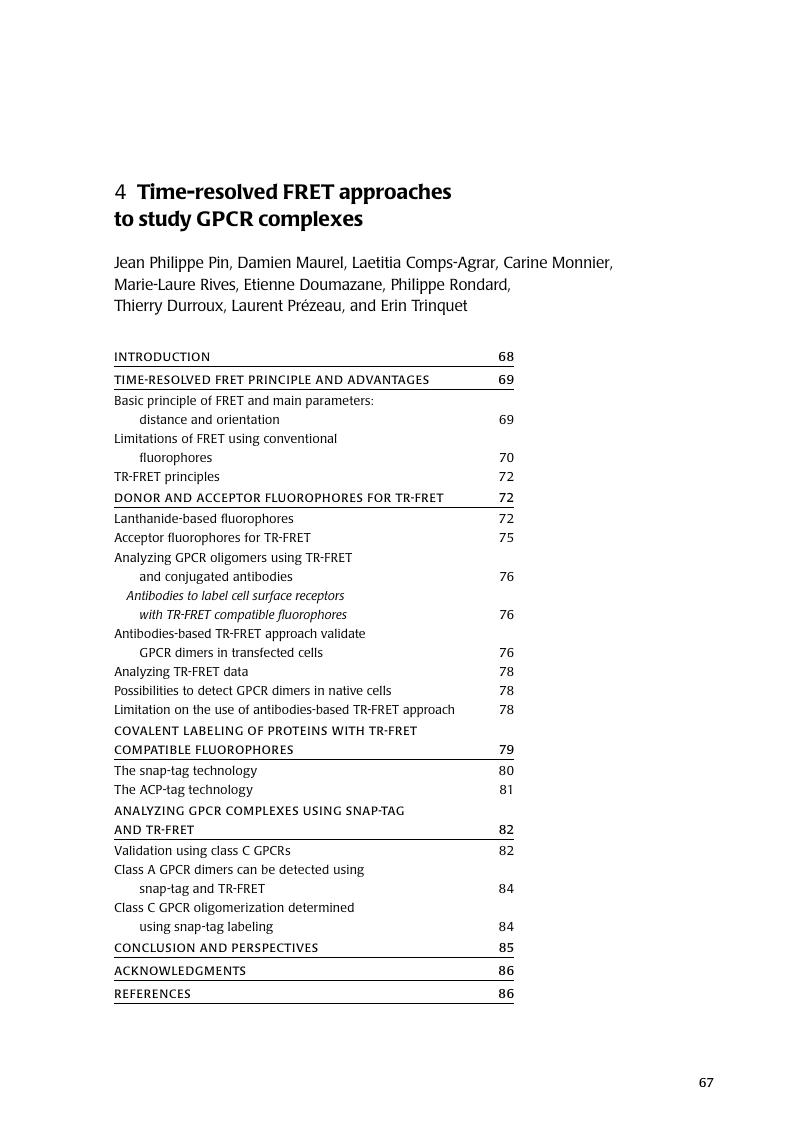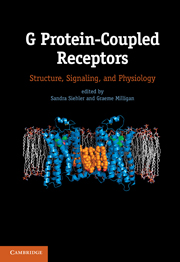Book contents
- Frontmatter
- Contents
- List of Figures
- List of Tables
- List of Contributors
- Introduction
- PART I ADVANCES IN GPCR PROTEIN RESEARCH
- PART II OLIGOMERIZATION OF GPCRS
- 3 GPCR-G protein fusions: Use in functional dimerization analysis
- 4 Time-resolved FRET approaches to study GPCR complexes
- 5 Signaling of dopamine receptor homo- and heterooligomers
- 6 Functional consequences of chemokine receptor dimerization
- PART III GPCR SIGNALING FEATURES
- PART IV LIGAND PHARMACOLOGY OF GPCRS
- PART V PHYSIOLOGICAL FUNCTIONS AND DRUG TARGETING OF GPCRS
- Index
- References
4 - Time-resolved FRET approaches to study GPCR complexes
from PART II - OLIGOMERIZATION OF GPCRS
Published online by Cambridge University Press: 05 June 2012
- Frontmatter
- Contents
- List of Figures
- List of Tables
- List of Contributors
- Introduction
- PART I ADVANCES IN GPCR PROTEIN RESEARCH
- PART II OLIGOMERIZATION OF GPCRS
- 3 GPCR-G protein fusions: Use in functional dimerization analysis
- 4 Time-resolved FRET approaches to study GPCR complexes
- 5 Signaling of dopamine receptor homo- and heterooligomers
- 6 Functional consequences of chemokine receptor dimerization
- PART III GPCR SIGNALING FEATURES
- PART IV LIGAND PHARMACOLOGY OF GPCRS
- PART V PHYSIOLOGICAL FUNCTIONS AND DRUG TARGETING OF GPCRS
- Index
- References
Summary

- Type
- Chapter
- Information
- G Protein-Coupled ReceptorsStructure, Signaling, and Physiology, pp. 67 - 89Publisher: Cambridge University PressPrint publication year: 2010
References
- 2
- Cited by



